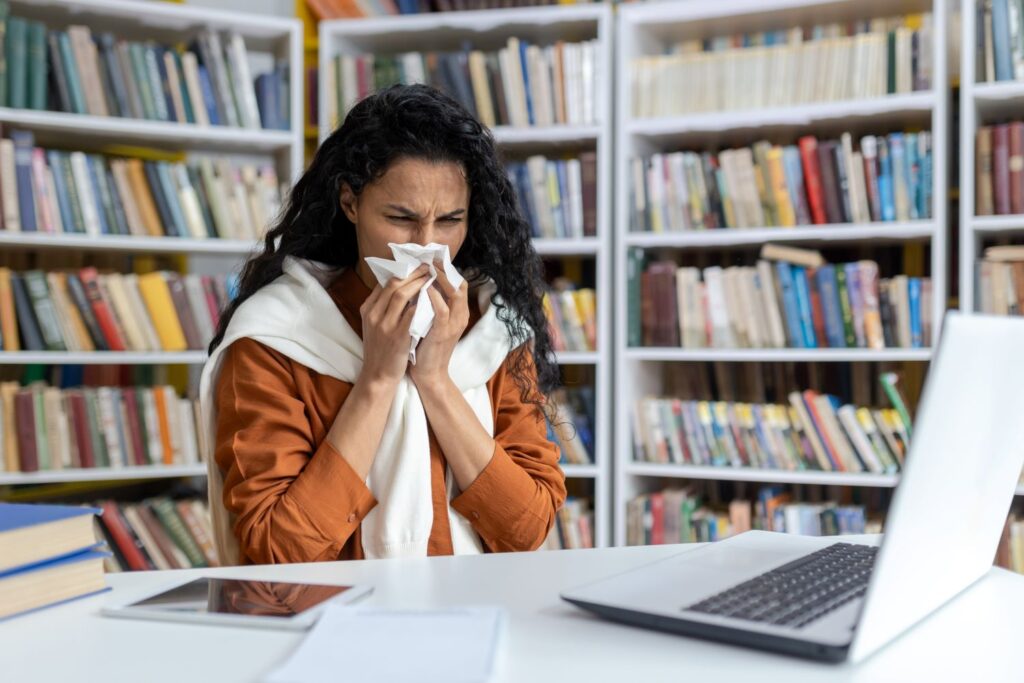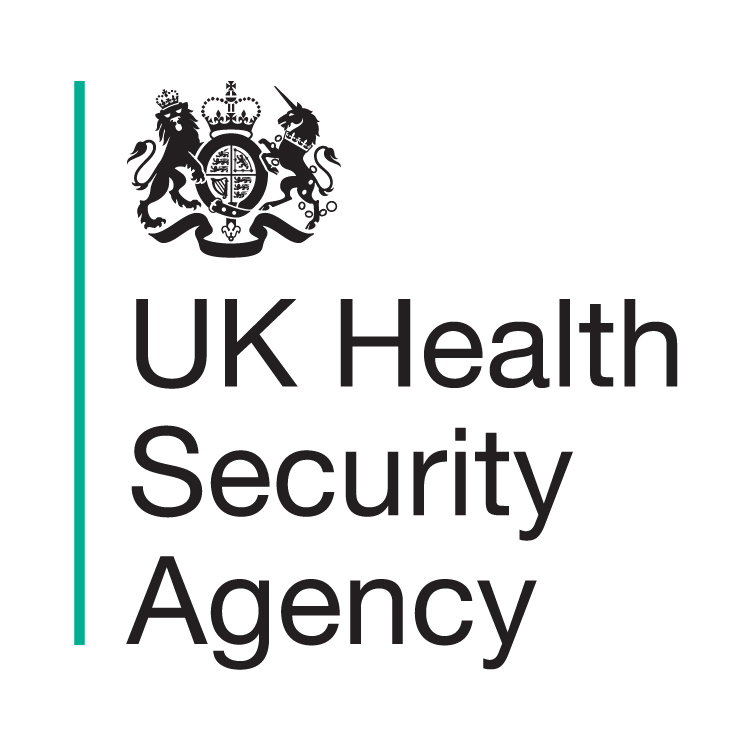
You might have a lot on right now. Organising family days out, coming up with elf on the shelf ideas, but winter illness could throw all your plans out of the window.
We see cases of influenza (flu), RSV and COVID-19 throughout the year, but in winter they circulate at the same time and can reach high levels.
We also track other respiratory viruses – rhinovirus, adenovirus, human metapneumovirus (hMPV) and parainfluenza – that can also peak over the autumn and winter months.
There are vaccines to help protect against flu, COVID-19 and RSV, which are offered to different vulnerable groups.
Staying at home when you have symptoms of flu or COVID-19 helps protect those who are vulnerable. If you need to go out when unwell, consider wearing a mask around other people.
Simple measures like catching coughs and sneezes in a tissue, regular handwashing, and opening a window when meeting others indoors can all help reduce the spread of respiratory infections.
You can find advice on managing winter illnesses on the NHS website, including how to use medications like paracetamol and ibuprofen. If you are taking cold or flu remedies, check whether they already contain paracetamol to make sure you don't take too much. If you have any concerns, speak to your pharmacist.
The following is an explainer of important information about these winter infections; their signs and symptoms, and information on who is eligible for vaccination.
Flu
Flu - also known as influenza - is a viral infection affecting the nose, throat, and lungs, mostly during the winter months. It is far worse than an ordinary cold, which usually causes a runny nose, sneezing, watery eyes and throat irritation. Symptoms of a cold usually occur gradually without causing a fever or body aches, which usually occur with flu. Flu signs and symptoms develop very rapidly and extreme tiredness is common.
Flu can lead to serious illness, especially in children, with thousands of hospitalisations each winter. Older people, those with a weakened immune system, and people with certain long-term health conditions are at higher risk. Last winter there were around 8,000 deaths associated with flu – this is higher than the approximately 3,500 deaths recorded the year before, but lower than during the 2022 to 2023 season, when there were around 16,000 deaths.
For those who took up the offer, last year’s flu vaccine had a significant impact on reducing severe illness, ranging from an almost 40% reduction in the number of those aged 65 and over being hospitalised, and a 75% reduction in those aged between 2 and 17 years.
Many people are eligible for the flu vaccine including:
- everyone aged 65 years and over
- those aged between 6 months and 65 with certain medical conditions
- those living with people who are immunocompromised
- frontline health and social care workers
- all pregnant women, to protect both themselves, their pregnancy and their newborn
- all children aged 2 and 3 years
- school-aged children (reception to year 11) are offered a nasal spray vaccine through school immunisation teams.
COVID-19
While for most people COVID-19 is not as severe as during the early years of the pandemic, the virus is still causing severe illness, hospitalisations, and deaths – particularly among those with a weakened immune system and those 75 year old and over.
It is normal and expected for viruses to genetically change over time and the current COVID-19 variants, much like previous variants, can spread easily through droplets released when an infected person coughs, sneezes or speaks. The autumn COVID-19 vaccines are our best defence against serious illness.
We have seen COVID-19 symptoms change over time. Today, many people now experience cold-like symptoms and some will also experiencefever or chills, continuous cough, shortness of breath, tiredness, body aches, headache, sore throat, blocked nose, loss of appetite, nausea, diarrhoea, or change in sense of taste or smell. Some people report a hoarse voice or a particularly painful sore throat, associated with the latest variants. This has been referred to in the media as ‘razor-blade throat’.
People aged 75 and over, living in a care home for older adults, or in who are immunosuppressed and aged over 6 months, are eligible for a COVID-19 vaccine.
Rhinovirus (as the most common cause of the ‘common cold’)
Rhinovirus causes what we know as the common cold. Cold symptoms come on gradually over 2 to 3 days.
The main symptoms include a blocked or runny nose, sneezing, a sore throat, a hoarse voice, a cough, feeling tired and unwell. You may also have a high temperature, aching muscles, a loss of taste and smell and a feeling of pressure in your ears and face.
Symptoms of a cold can last longer in young children. They may also be irritable, have difficulty feeding and sleeping, breathe through their mouth, and get sick after coughing.
You can get more information on telling the difference between colds and flu via the NHS website.
RSV
Respiratory syncytial virus (RSV) is a major respiratory virus that is common over the winter period, typically November to February, and can spread through coughs and sneezes.
Symptomsinclude cough, wheezing, shortness of breath, tiredness and fever.
While the symptoms are mild for many, RSV can cause bronchiolitis in infants, which can make it difficult for them to breathe and feed. You may see your baby experiencing fast or noisy breathing and being unsettled or difficult to comfort. This accounts for approximately 20,000 hospitalisations annually in children aged under 1.
RSV can also be severe in older adults, causing pneumonia and flare-ups of existing lung disease and other long-term conditions. It causes around 9,000 hospitalisations in those aged 75 and over in the UK each year.
An NHS vaccine has been introduced for pregnant women, to protect babies once they are born, and for those aged 75 to 79 years. It hasn’t been recommended for those age 80 or older because there were too few people of that age in the clinical trials to be sure of protection.
If received during pregnancy, the vaccine reduces the risk of severe bronchiolitis by 70% in the first 6 months of a baby’s life.
Adenovirus, parainfluenza and human metapneumovirus (hMPV)
These 3 viruses cause a wide range of symptoms similar to those of a cold.
Parainfluenza viruses are common causes of respiratory infections in infants, young children, older adults, and people with weakened immune systems.
Adenoviruses and hMPV typically cause mild, cold-like illnesses in people of all ages. They are seen throughout the year, but can spread more easily in winter.
Tracking these illnesses
You can see our surveillance reports which track these viruses, plus flu and COVID-19 here.
